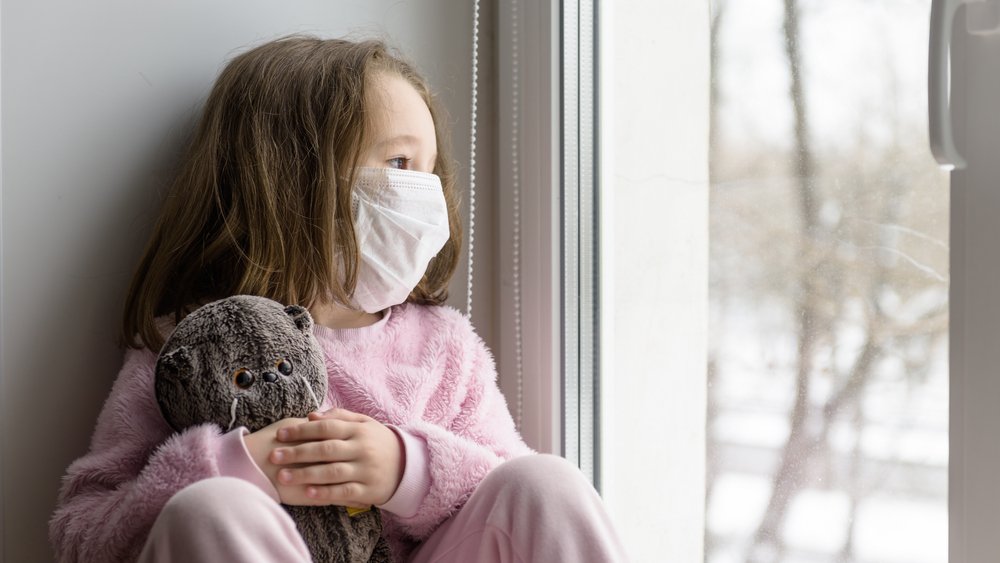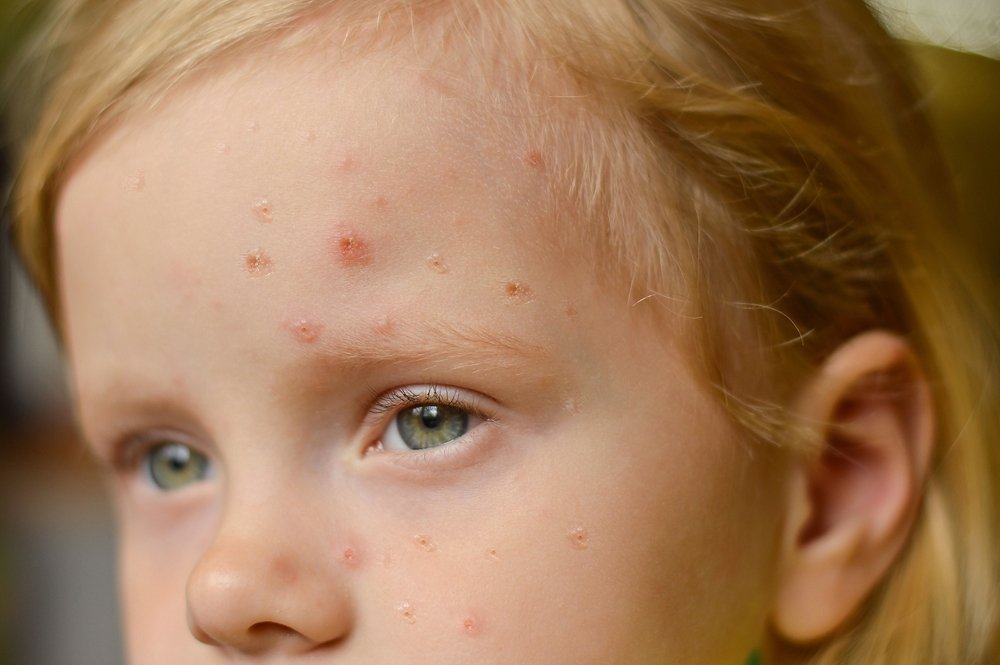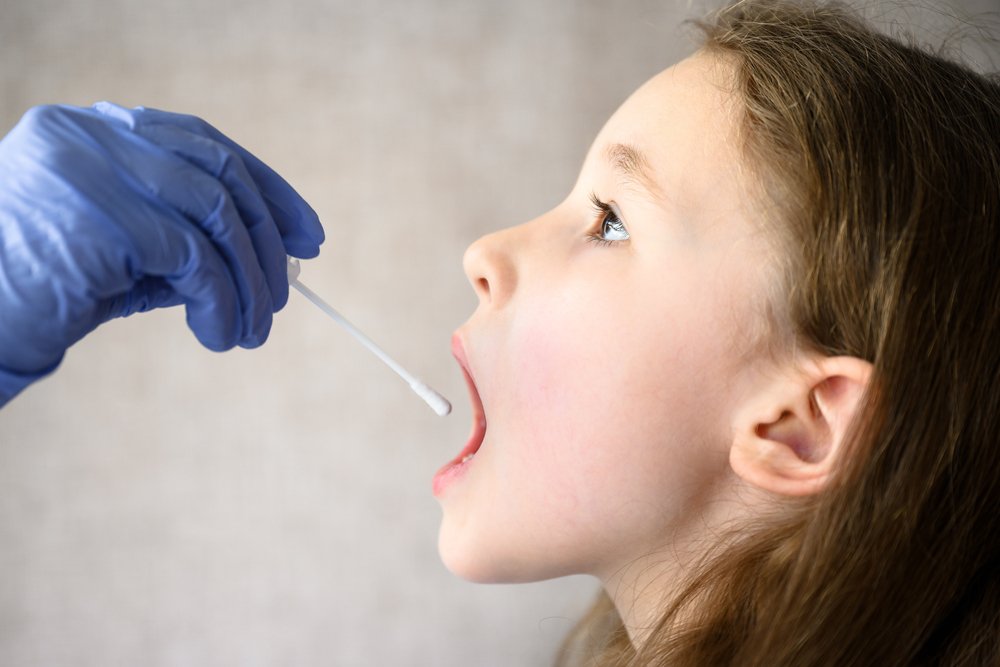Although monkeypox has been detected in children and adults before, the new strain has proven to be more transmissible and invades territories more quickly. There are already cases of the disease in adults in UE, and in other countries in children as well. And do not think only of the sexual case of transmission: there is a well-known story of a boy who fell ill after returning home from a seaside resort, where the family had used hotel towels and sunbeds.
So knowing the symptoms and preventive measures of monkeypox in children in the current situation is necessary for every parent. What is known at this time?
Monkeypox in children and adolescents: routes of infection and risk groups
Historically, monkeypox has been reported in children and adolescents only in endemic regions of Africa. But this infection is not as well known as, for example, cowpox or chickenpox, and it is not known whether children are more susceptible to monkeypox than adults and whether clinical outcomes differ.
So far, two cases of monkeypox in children, an infant and a toddler, have been reported in the United States, and at least 16 sick children and adolescents have been identified in European countries.
Monkeypox can be spread by contact with fluids (e.g., secretions from lesions and respiratory secretions) of sick people or animals or by contact with tissue (e.g., shared clothing, towels, bath and bedding).
Monkeypox can also be transmitted to the fetus during pregnancy or to the newborn through close contact during and after delivery (The Journal of Infectious Diseases).
Although data on new monkeypox in children are limited, there is information on previous cases. The disease is more likely to be severe in children under the age of 8 years. In addition, any child with immunodeficiency conditions or certain skin diseases, such as eczema, is at risk for severe monkeypox.
Fact!
The 2022 monkeypox outbreak is caused by the Clade IIb virus, which usually causes less severe disease than the previous Clade I strain.
No data are available on the potential complications of Clade II strain infections in children. It is known that in rare cases monkeypox can lead to severe consequences, including encephalitis, phlegmon, pneumonia, sepsis, abscess, airway obstruction due to severe lymphadenopathy, keratitis and corneal scarring.
Signs and symptoms of monkeypox in children

Similar to infections in adults, the most common sign of monkeypox in children and adolescents is a rash that progresses from patchy-papular lesions to vesicles, pustules, and finally scabs.
Previously, high fever and lymph node involvement were noted in monkeypox patients, but with the new strain, these symptoms are not as common. Other signs may include fatigue and headache.
Oropharyngeal lesions may cause difficulty swallowing or coughing. Intraocular lesions, eyelid swelling, or crusting on the eyelids may develop if there is a rash near or in the child’s eye (which occurs when children rub their eyes with their hands).
Fact!
Monkeypox rash can be confused with frequent childhood infections, including chickenpox (varicella), hand-foot-mouth disease, measles, scabies, contagious molluscum, herpes, congenital syphilis and even allergic skin rash.
So at the slightest possibility of contact with sick people and the appearance of a rash, you should immediately consult a doctor.
Treatment of monkeypox in children

Like adults, children and adolescents with monkeypox should be closely monitored throughout their illness. On the part of parents (in addition to taking prescribed medications) special care should be taken to ensure that skin lesions remain closed and that children do not scratch the affected areas or touch their eyes: this can lead to autoinoculation and more severe disease.
You should watch your fluid intake, especially if the skin lesion is extensive – so the body loses more moisture.
Although most cases of monkeypox are mild and do not require special therapy, only symptomatic remedies, hospitalization is indicated for children under 8 years of age and children and adolescents with:
- Severe course (hemorrhagic disease, extensive confluent skin lesions, encephalitis, airway obstruction, etc.).
- Complications of monkeypox (pneumonia, sepsis, eye lesions, phlegmon or abscess).
- Immunodeficiency condition of the child/adolescent.
- Atopic dermatitis or with other active exfoliative skin pathologies (eczema, burns, impetigo, chicken pox, herpes, severe acne, severe diaper dermatitis, etc.)
How is monkeypox treated in children?
In mild cases, symptomatic and antibacterial topical medications are used so that the child does not suffer from fever, itching, and the rash does not become inflamed from scratching or rubbing against clothing. In other words, treatment is generally similar to mild and moderate cases of chickenpox.
In severe cases, specific therapy is added. According to the research protocol, tecovirimat can currently be used as a first-line treatment for infection in children and adolescents with severe disease, comorbidities or complications of monkeypox.
Evidence for the efficacy of tecovirimat in treating monkeypox comes from animal studies that suggest it may reduce mortality and from a case study that suggests tecovirimat may limit the duration of the disease and the release of the virus.
Prior to the international monkeypox outbreak in 2022, tecovirimat was used in a 28-month-old child without any side effects associated with the drug, but no clinical trials were conducted in the pediatric population.
Other treatments may be considered in addition to tecovirimat or as an alternative when tecovirimat is not sufficiently effective, contraindicated, or unavailable.
The use of the antiviral drugs cidofovir and brincidofovir can also be considered, but they should be used with caution because of potential toxicity.
Fact!
Cowpox immunoglobulin can be used to treat severe monkeypox infection, although it is not yet known whether the treatment would benefit children.
Preventing monkeypox: Should kindergartens and schools be worried?

There are currently no vaccines or other products licensed to prevent monkeypox in children or adolescents. The approval process for the cowpox vaccine and immunoglobulin has not yet been completed. However, monkeypox is a disease that is most commonly transmitted by close skin-to-skin contact, making handwashing the primary prevention of infection.
Fact!
In children, transmission can occur through hugs, cuddles, feeding, and shared items such as towels, bedding, cups, and utensils.
In addition, poxviruses, such as monkeypox, can survive in bedding and clothing and are particularly good in “dark, cool environments with low humidity.” There is evidence from a study in which a live virus was found 15 days after the patient left home.
Important.
It is also worth knowing that monkeypox can be transmitted from humans to pets and vice versa: The Lancet magazine describes a case of transmission from host to dog in France.
So in addition to reminding your child not to swap hats with friends (in addition to rare monkeypox in Russia, this is dangerous for transmitting more common lice, shingles and other infections) it is worthwhile to decontaminate clothing more often. This is especially important if you or your children visit swimming pools, water parks, public saunas, or are returning from a resort. Read expert advice on how to protect your underwear from monkeypox in “How to Disinfect Clothes and Why Do It At All?”
Sources used
- Marennikova SS, Seluhina EM, Mal’ceva NN, Cimiskjan KL, Macevic GR. Isolation and properties of the causal agent of a new variola-like disease (monkeypox) in man. Bull World Health Organ. 1972;46:599–611. – PMC – PubMed
- Huhn GD, Bauer AM, Yorita K, et al. Clinical characteristics of human monkeypox, and risk factors for severe disease. Clin Infect Dis. 2005;41:1742–1751. – PubMed
- Beer EM, Rao VB. A systematic review of the epidemiology of human monkeypox outbreaks and implications for outbreak strategy. PLoS Negl Trop Dis. 2019;13 – PMC – PubMed
- Clinical features and management of human monkeypox: a retrospective observational study in the UK / Adler H, Gould S, Hine P, et al. // Lancet Infect Dis. – 2022
- Monkeypox virus infection in humans across 16 countries-April-June 2022 / Thornhill J, Barkati S, Walmsley S, et al. – 2022
The articles on this site are for information purposes only. The site administrators are not responsible for attempting to apply any recipe, advice or diet, nor do they guarantee that the information provided will help or harm you personally. Be cautious and always consult a doctor or nutritionist!
*All products recommended are selected by our editorial team. Some of our articles include affiliate links. If you buy something through one of these links, you help us earn a small commission from the seller and thus support the writing of useful and quality articles.





